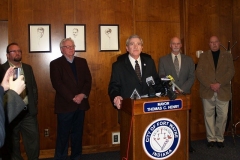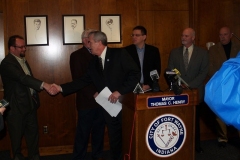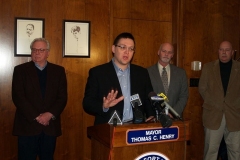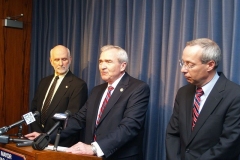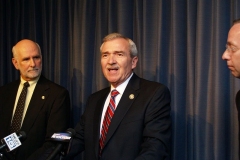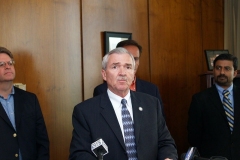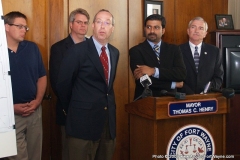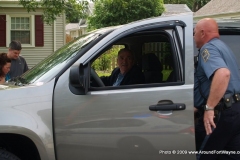![]()
News release from the City of Fort Wayne:
Mayor Henry cleans slate with demolition, launches new beginning for key site
McMillen Park Apartments project created jobs, kept 35 million pounds of material from landfill
Mayor Tom Henry today punctuated the end of an era and the start of new opportunities for a prime parcel in southeast Fort Wayne to mark the end of demolition on the site of the former McMillen Park Apartments. Working together with nearby neighborhoods and area leaders, the future of the 23-acre parcel near McKinnie Avenue and Anthony Boulevard will be explored through a community planning process. The Mayor’s action also emphasized the successful job creation efforts and positive recycling story of this clearance project.
“The removal of these obsolete buildings marks a new beginning,” said Mayor Henry. “It is a fresh start for this vital part of our community and a chance to promote new growth southeast. Moving forward, we will be working with community stakeholders to envision how best to maximize this important real estate and transform it into an asset that can attract new jobs and business investment, while also enhancing the desirability of this proud neighborhood.”
Joining Mayor Henry were representatives of the private contractors, subcontractors and nonprofit agencies who removed the 216 post-World War II apartments that had become largely vacant over the years. The contractors for the project were Fort Wayne-based Feuser Contracting and Martin Enterprises.
Demolition of the five zones of the apartments started in May with funding from the U.S. Department of Housing and Urban Development’s Community Development Block Grant. It should be completed by the end of August.
Local job impact was amplified through the hiring of local subcontractors and vendors turning the project into a job-creation effort. The City of Fort Wayne required contractors to use HUD Section 3 subcontractors, including woman-owned and minority-owned enterprises, along with clients of the nonprofit Blue Jacket.
Blue Jacket, Inc. works with adult ex-offenders as they make the transition from the criminal justice system back to the working world.
Four Blue Jacket transitional employees who are graduates of the organization’s job-readiness training were hired and worked on various phases of the demolition, resulting with one gaining full-time employment through the contractors and two more on the path to full-time jobs. “This is truly a project that has put people back to work and created jobs for Fort Wayne residents,” Mayor Henry noted.
The sustainability of the demolition effort was highlighted through data showing that 17,500 tons of recyclable material was diverted from the landfill including scrap metal, concrete, and salvageable materials like shutters and appliances. These reclaimed items were sold at the Habitat for Humanity ReStore shop or used by the Fort Wayne Police Department for training. Prior to demolition, the City removed the buildings’ asbestos to comply with environmental regulations.
The City’s commitment to working with those who live nearby to lessen the impact of the process was underscored by the techniques contractors employed throughout the endeavor. To minimize dust on adjacent properties, contractors performed a “wet” demolition, keeping the site hosed down with water during the removal of the buildings. The work was also only performed during daytime, weekday hours to reduce noise and disturbance in the neighborhood.
“The City’s reduce, reuse, recycle strategy allowed us to expand the lifecycle of many materials, extend the life of our landfills and demonstrate again our commitment to sustainability,” added Mayor Henry. “This project is a model for optimally working with contractors on a demolition. Together, we strove to mitigate negative impacts, save resources, create jobs, and from the outset, leverage the future potential of a great location.”
Once the demolition is complete, the City will use community engagement and planning strategies to gather ideas from neighbors and local stakeholders on how the property might best be used. On the heels of this planning phase, staff will begin work with possible developers to investigate site options. Because the City purchased the property with federal Neighborhood Stabilization Program funds, there is a 10-year timeframe to redevelop it.
The demolition cost about $836,000, which was about $164,000 below the projected cost. Using federal NSP money, the City purchased the foreclosed property for $1.1 million. Until the property is redeveloped, the City will maintain it as open green space.

